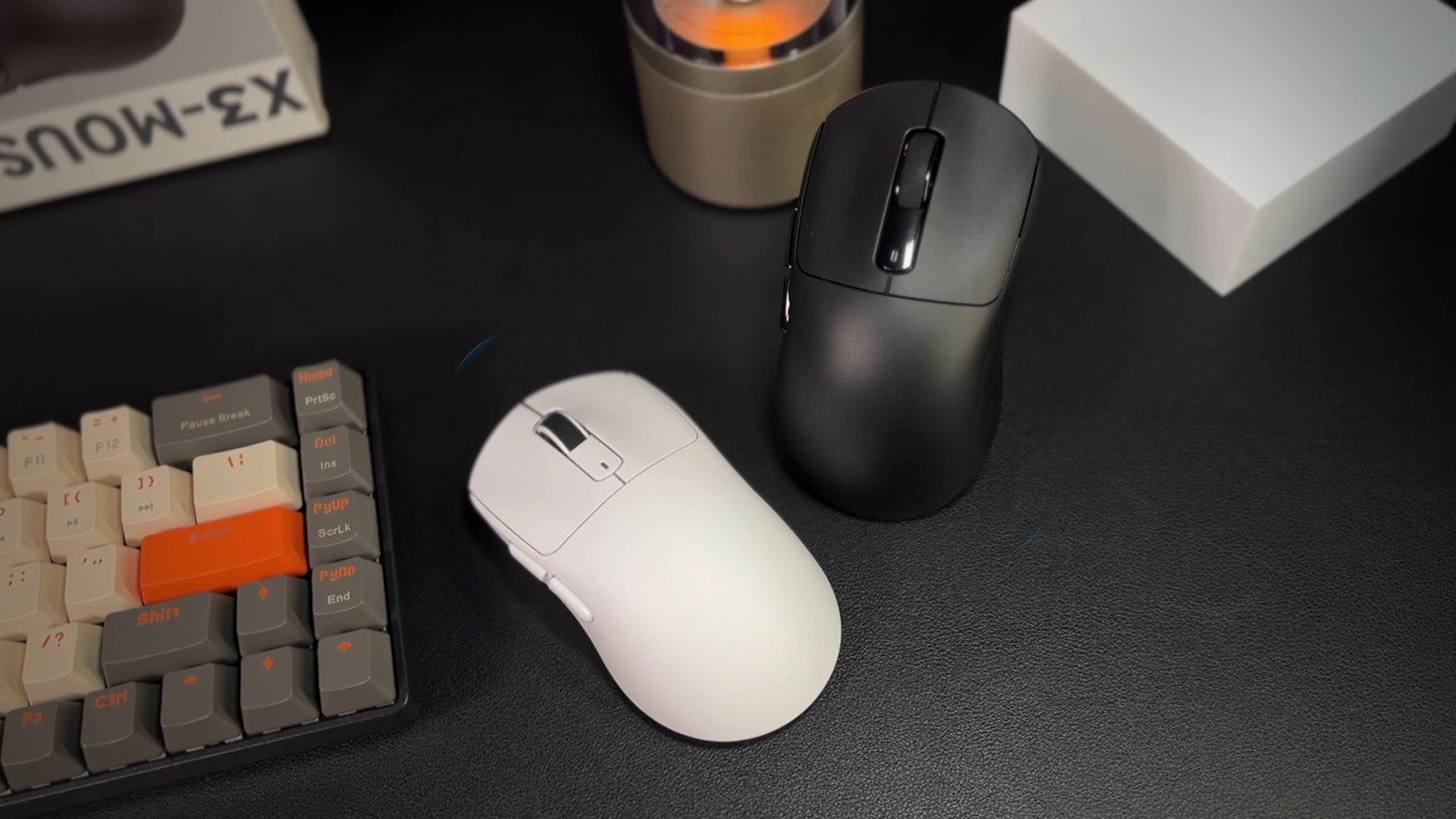Mechanical keyboards win hearts with their satisfying clicks and superior typing experience. Whether you're a gamer seeking a competitive edge, a writer looking for comfortable keystrokes, or someone just longing for that classic typewriter feel, there's a mechanical keyboard out there perfectly tailored to your needs. This guide aims to help first-time buyers of mechanical keyboards. From learning what a mechanical keyboard is, showing its benefits, and telling the details of switches, layouts, and features to finally knowing how to maintain your precious device, this comprehensive guide will provide you with all the knowledge you need to make an informed decision and find the mechanical keyboard that suits you best.
Mechanical Keyboards: An Overview
Distinct Nature
Unlike the membrane keyboards that are commonly bundled with computers, mechanical keyboards are designed for precision and longevity. Each key operates independently with a discrete switch mechanism, providing consistent and tactile feedback to your fingertips. This unique feature not only enhances typing accuracy but also offers a distinct comfort that can reduce finger fatigue during long typing sessions.
Inside a Mechanical Keyboard
A mechanical keyboard is a complex piece of engineering. Each keycap sits atop an individual switch, which registers the keystroke when pressed. Beneath the switches is the PCB (Printed Circuit Board), which processes each input and sends the signal to your computer. Surrounding this technology is the keyboard frame, which is often made from sturdy materials like aluminum or plastic, providing a solid base for the whole assembly.
Understanding these basics will set you on the right path to selecting a mechanical keyboard that meets your personal needs in terms of both form and function.

Key Considerations Before Buying a Mechanical Keyboard
What's Your Typing Needs
It's crucial to identify what you primarily need your keyboard for. Are you a gamer looking for quick response times and customizable macros? A writer or programmer needing comfort and reliability for long typing sessions? Or perhaps someone who enjoys the aesthetics and tactile feel of typing on a mechanical keyboard? Understanding your primary use will guide you toward the features most important to you, whether that's specific switch types, key layouts, or additional functionalities.
Setting Your Budget
Mechanical keyboards come in a wide range of prices, from budget-friendly options under $50 to high-end models reaching several hundred dollars. Price differences often reflect the quality of materials, the type of switches, additional features like RGB lighting or programmable keys, and the brand. It's important to set a realistic budget early on, keeping in mind that investing a bit more can significantly enhance durability and user experience. Remember, a good mechanical keyboard is not just an expense; it's an investment in your everyday comfort and productivity.
Size and Form Factor
Mechanical keyboards are available in various sizes and layouts, which can impact both your desk space and typing experience. The most common are:
- Full-Size: Includes all standard keys plus a number pad. Great for those who frequently input data or require the additional keys.
- Tenkeyless (TKL): Removes the number pad for a more compact design, ideal for smaller workspaces or users who prefer more mouse movement area.
- Compact/60%: Reduces footprint further by eliminating function and arrow keys, among others. Perfect for minimalists or mobile users who prioritize portability.
Choosing the right size depends on your usage habits and workspace limitations. Consider how you use your current keyboard and what keys you can't live without.
Wired vs Wireless
Connectivity is another vital factor to consider. Wired mechanical keyboards offer reliable, lag-free connections, essential for gaming or tasks requiring fast, precise inputs. On the other hand, wireless models provide flexibility and a cleaner desk setup but can introduce latency issues or require regular charging/battery replacement. Your choice here will depend on your personal preference for convenience versus performance.
Knowing these key considerations before making a purchase can help narrow down your options and lead you to a mechanical keyboard that not only meets your needs but also fits within your budget and workspace.

Types of Mechanical Keyboard Switches
Different Switch Types
At the heart of every mechanical keyboard is its switches, and these come in three primary types: linear, tactile, and clicky.
- Linear switches offer a smooth keystroke without any tactile feedback or audible clicks. They are often preferred for their consistent keypress and quiet operation, making them a favorite among gamers.
- Tactical switches provide a noticeable bump in the middle of the keypress, allowing you to feel exactly when the switch actuates. This feedback can improve typing accuracy, favored by typists who want confirmation of each keystroke without a full press.
- Clicky switches give both tactile feedback and a distinctive audible click sound at the point of actuation, much like classic typewriters. This type is popular with users who enjoy audio confirmation of their keystrokes but might not be suitable in noise-sensitive environments.
Actuation Point and Force
Each mechanical switch type has a particular actuation force - the amount of pressure required to depress a key and register an input – and an actuation point – the distance at which the key needs to be pressed down to actuate. A lower actuation force can lead to faster typing speeds but may also result in more accidental keystrokes. Conversely, a higher force requires more deliberate key presses, which can be beneficial for preventing unintended inputs. Finding the right balance that suits your typing style is key to selecting your ideal mechanical keyboard.

Testing and Trying Out Mechanical Keyboards
Physical Test
Experiencing a mechanical keyboard in person can be an eye-opener, especially if you're accustomed to standard membrane keyboards.
- Personal Preference: Everyone's typing preference is unique. What feels right for one person might not for another. Testing different switches and layouts helps you discover what suits your touch.
- Feedback and Sound: The tactile response and sound of a mechanical keyboard can vary significantly between models. Trying them out allows you to find the balance you enjoy between feedback strength and noise level.
If possible, visit stores or use trial displays to get a hands-on feel for various keyboards.
Online Resources and Community Insight
If you can't test keyboards in person, there are plenty of resources online that can help guide your decision:
- Video Reviews and Demonstrations: These can give you a sense of the sound and action of different keyboards and switches.
- User Reviews and Forums: Online communities and review sites offer invaluable insight into the long-term satisfaction and potential issues with specific models.
While these resources can't replicate the experience of using a keyboard yourself, they can provide a wealth of information to inform your purchase.
Return Policies and Warranties
Before making a purchase, it's wise to check the return policy and warranty:
- Return Policies: Familiarize yourself with the return policies of the retailer or manufacturer. Some may allow you to return the keyboard within a certain period if it doesn't meet your expectations.
- Warranties: A solid warranty can provide peace of mind, ensuring that any defects or problems that arise after purchase will be taken care of without additional cost.
Taking these factors into account will help you choose where to buy your mechanical keyboard and protect your investment.

Choosing Your Ideal Mechanical Keyboard
Selecting the right mechanical keyboard is about understanding the intricate balance of performance, comfort, and personal preference. From the distinct actuation points of different switches to considering form factor and connectivity, each aspect plays a crucial role in your overall typing experience. Armed with knowledge about switch types and the importance of hands-on testing, you are now better prepared to make an informed decision that aligns with your needs and budget. Remember, a good mechanical keyboard isn't just a tool but an investment that enhances every keystroke, whether you're gaming, coding, or simply enjoying the tactile pleasure of typing.





Leave a comment
This site is protected by hCaptcha and the hCaptcha Privacy Policy and Terms of Service apply.